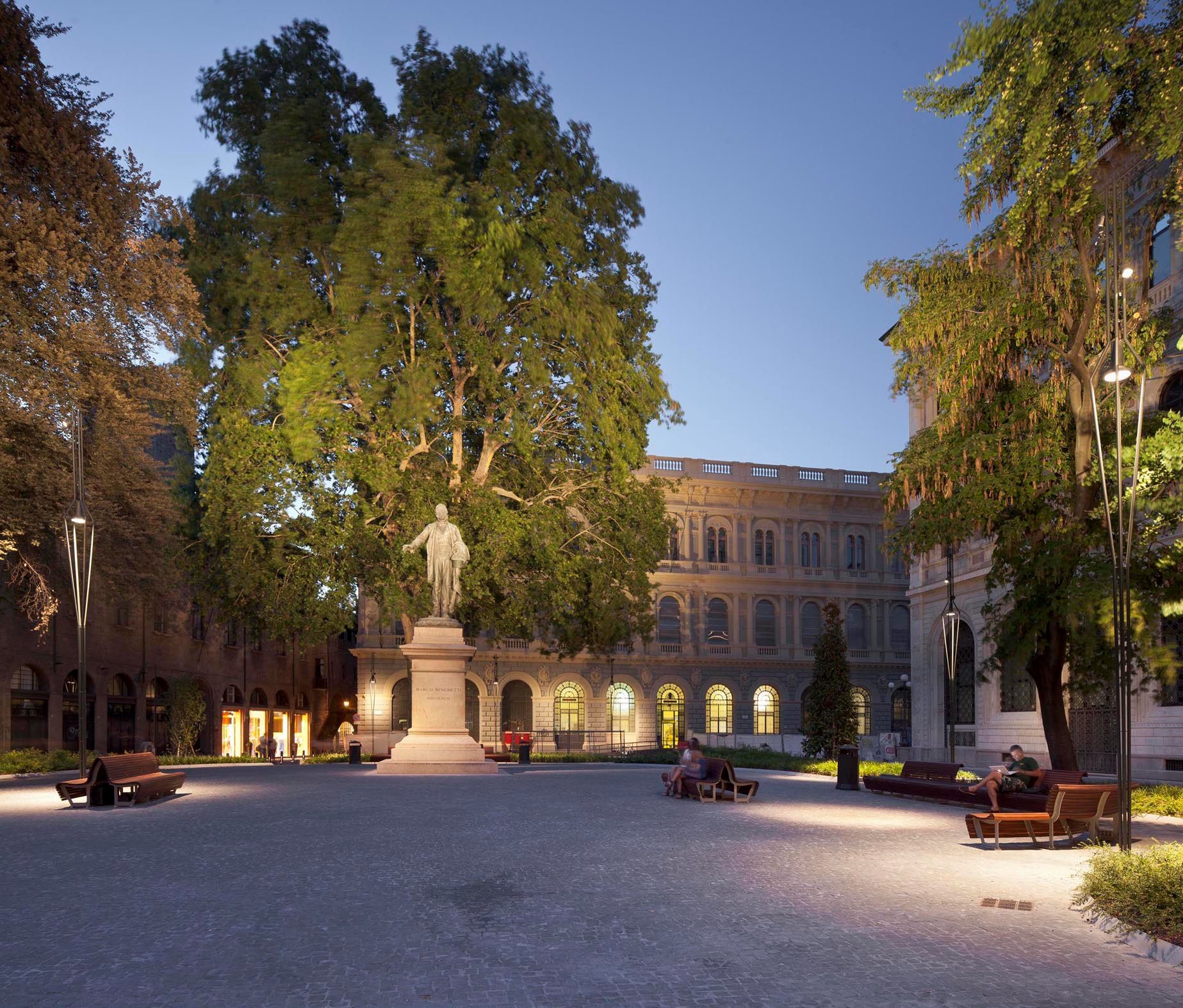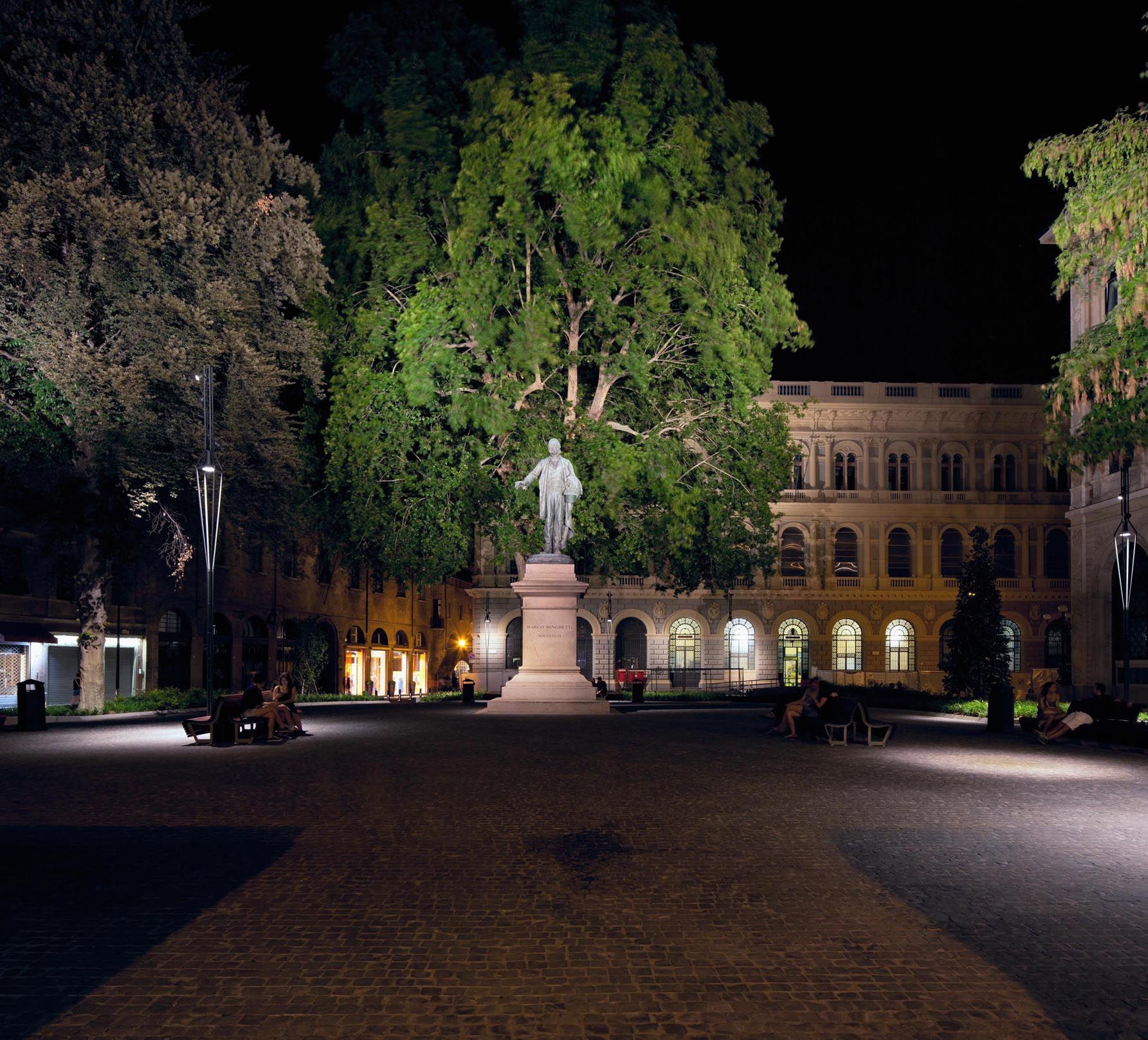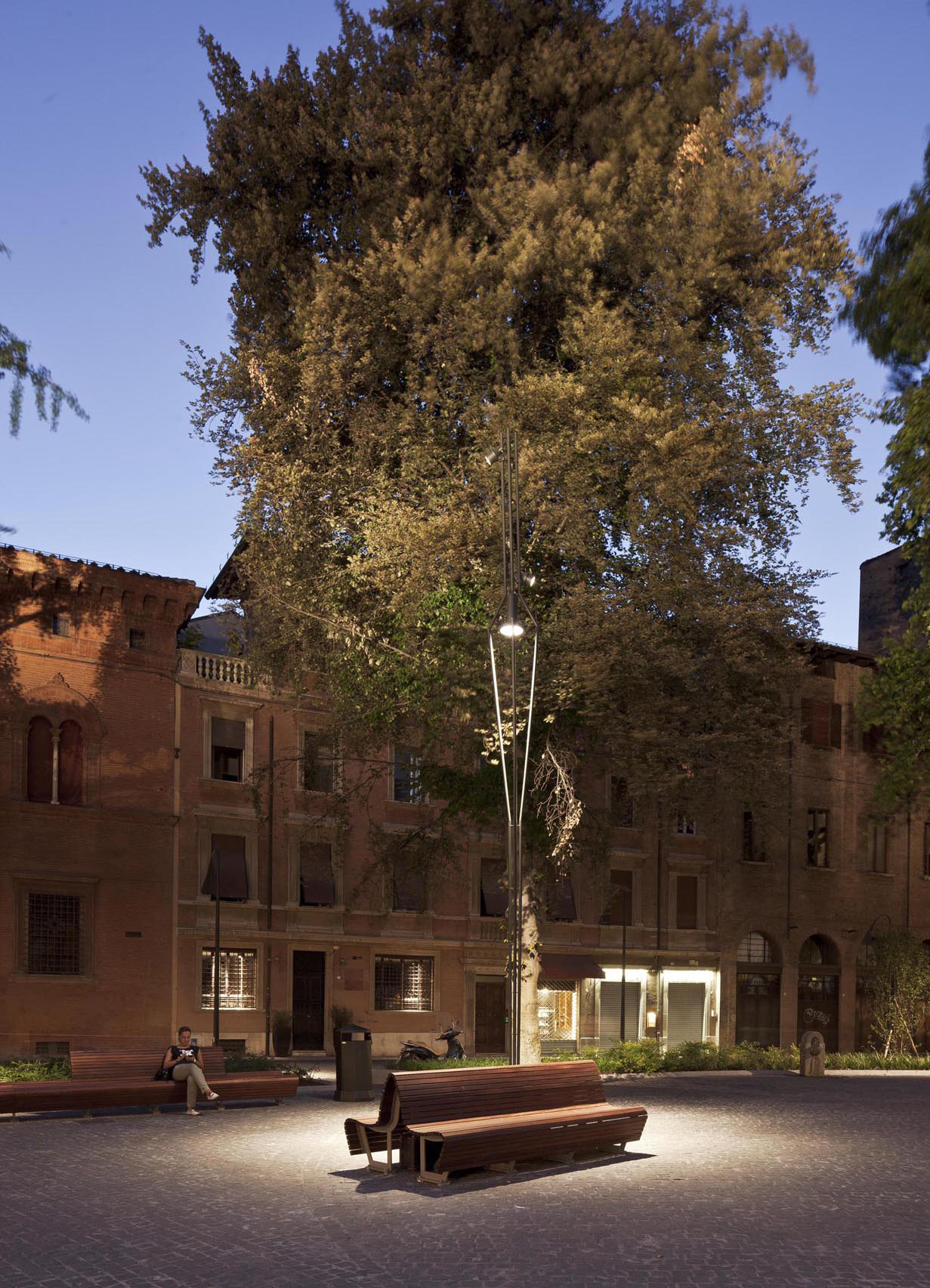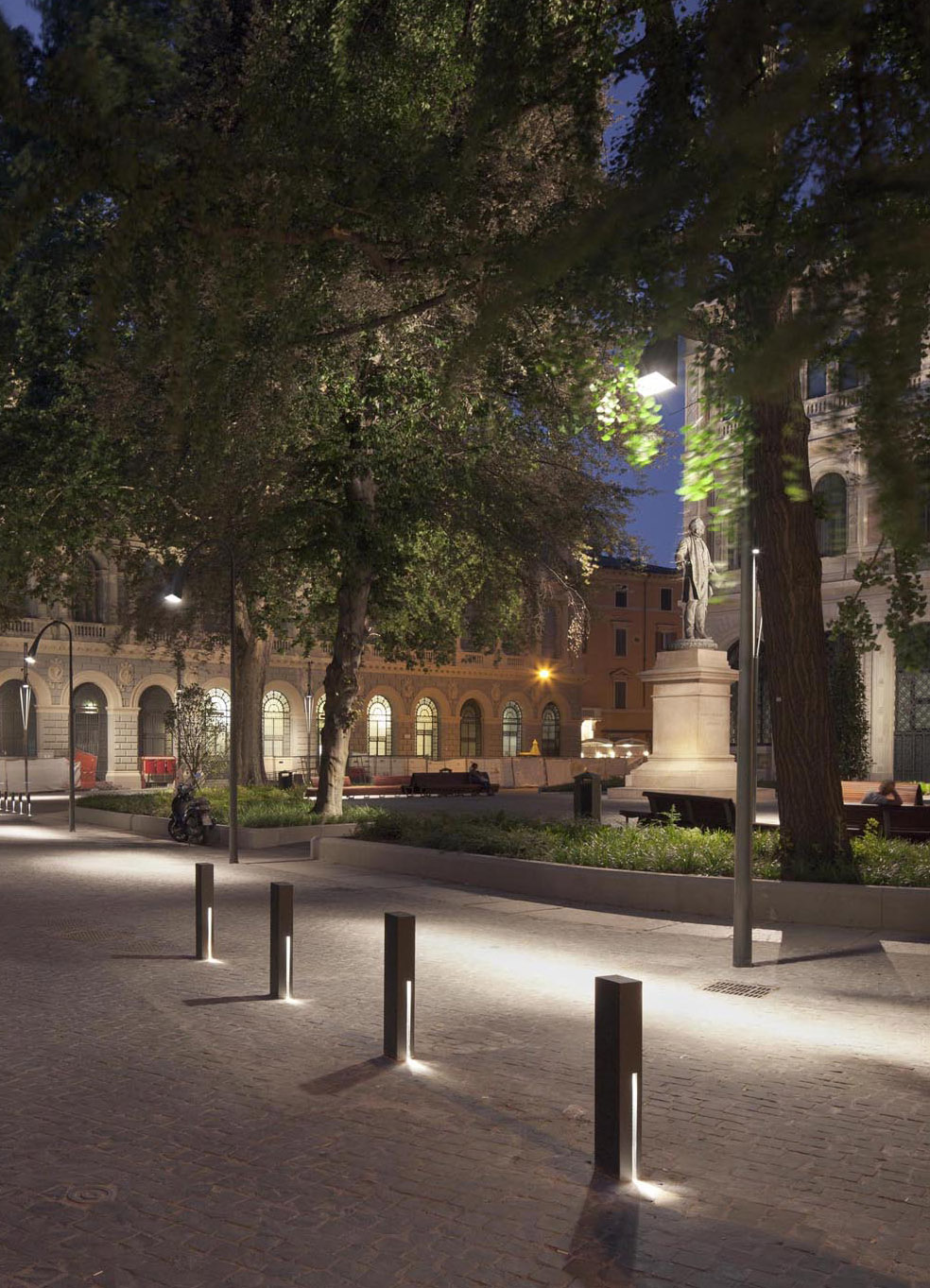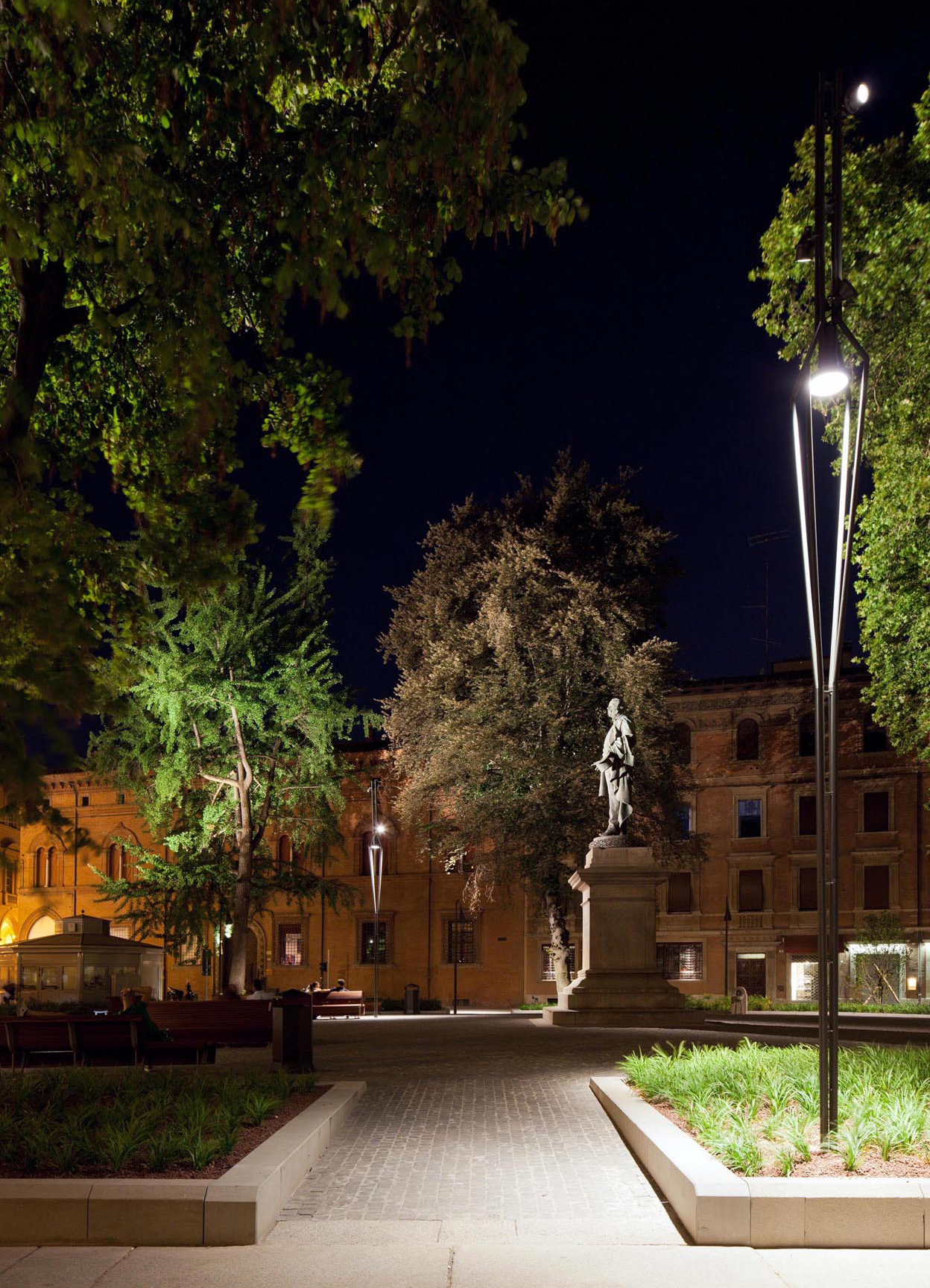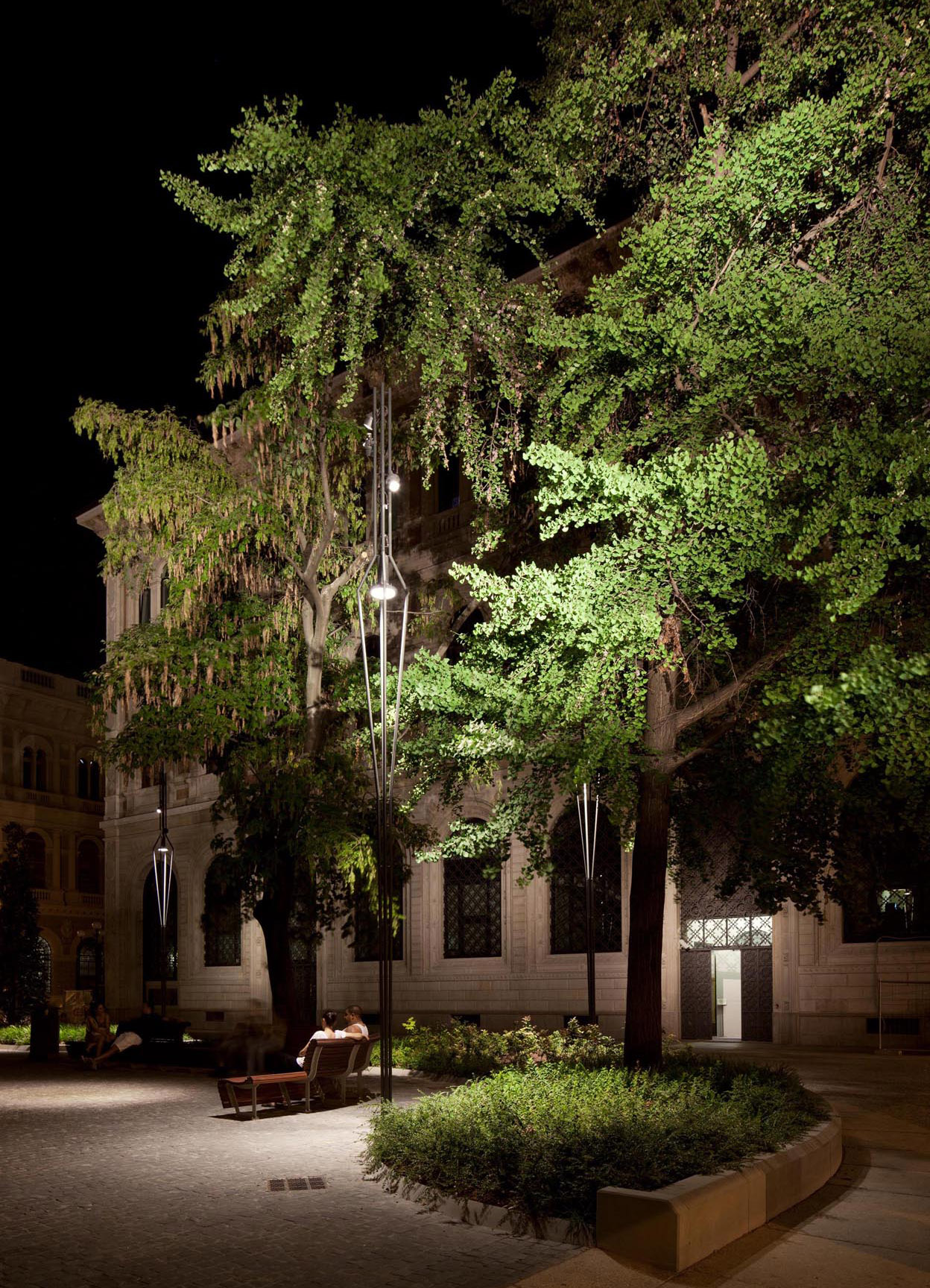
projects | Viabizzuno progettiamo la luce
discover all the Viabizzuno designs and projects in collaboration with the world’s leading architects and designers.


piazza minghetti e piazza del francia
place:bologna, italia
project:arch. glauco gresleri
buyer:comune di bologna
lighting project:mario nanni
technical sales consultant:maicol fedrigo
photos:UpO Viabizzuno
the city of bologna reconquers one of its historical squares thanks to an urban and architectonic intervention combined with a light project that aimed to give back to a big urban empty space, with confusing and multiple functions, its original identity as a garden, a space of break and contemplation. thanks to the architect glauco gresleri’s project, the 4500 mq of the ‘garden’ square get back to their role as walking, meeting area and embellishment of the ‘unit’city, proud of its new directional centres, without forgetting the marks of an older past. the project by architect glauco gresleri schedules to evoke the presence of aposa, the old bologna stream that until the end of the nineteenth century still flowed open-pit, of the preexisting religious monuments and also to use the ancient bologna units of measurements. the project inserts itself inside an urban context that is relevant for bologna, from an historical and architectonic point of view. here one can find different fundamental elements, each with a precise identity: via dei toschi, the garden, the post office palace, the savings bank and piazza del francia. a square, new, where to stop, during the walking, or to relax on the benches placed in a big enclave shape, becomes an occasion to discover the architectural facades of the palazzi del mengoni, delle poste and zambeccari, and also of the houses in via de’ toschi, that are now visible also from via farini thanks to the transparence of the bus platforms that give to the area a perspective depth earlier unknown. the ‘sentiero di vals’ poles guide us step by step to the to the relax area that is clearly noticeable thanks to the long mahogany wood benches that, borrowing the concave curvy shape of the island, compose the wings of an ‘urban assembly’ where the calibrated distance accomplishes at the same time the principle of the ‘presence of the others’ and the ‘freedom of behaving’. the central monument by marco minghetti, italian politician from bologna at the end of the nineteenth century, rises now directly on the pavement, so loosing the iconic extraneous layout to became a domestic presence of a nearly personal relationship. a special quality is given by the emotional strenght of lighting in mario nanni’s design version. he composes a luminous simphony, poetic and respectful of the energy consumption at the same time. to respect and valorize the different elements that characterize this area, it has been decided to integrate past and present, new technologies and old light fittings, contempory project and tradition, giving life to a design that originates from the idea of ‘conservative renovation of light’. the light project for piazza minghetti started from these principles: -to make citizens feel safe and give life back to the urban context adding to the normal perception of urban spaces the pleasure of seeing the places with a new emotion, arisen from a more discreet, functional and designed light. -to apply a conservative renovation of light, aiming to partly maintain the preexisting light fittings, but formally correct, replacing only the luminous sources, in order to safeguard the building originality and to start a real process of energy saving. -to create a lighting suitable for each surrounding building, underlining and enhancing their formal identity: via dei toschi like a drive-over alley, the post office palace like a scenic background of the garden and the savings bank like a relevant volumetric element. -to keep a lighting level able not to flatten architecture in their aspects, offering a suggestive night interpretation of the city. -to change the perception of the city while the night hours pass by, taking into account the activities that live here, using scheduled scenic designs. -to use for the light fittings metal halide light sources, while using for street furniture led sources, characterized by a maximum light efficiency, long lasting and minimum maintenance cost. so light becomes a cohesion and relationship elemet among the important architectonic elements of the square, restoring a dialogue between the urban space and people who live it. light, during the day as well as at night, plays an important role in this relationship, acting on an emotional and sensorial sphere, often unconscious but really important.
scroll

